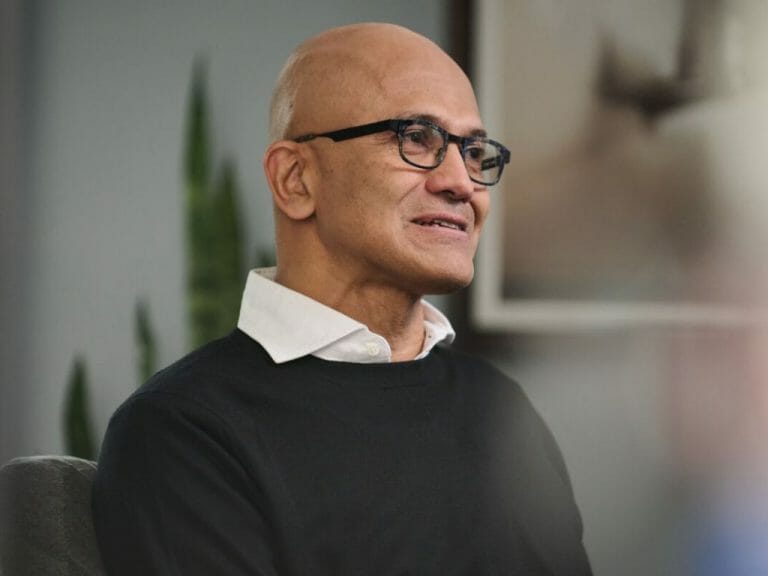Microsoft CEO Satya Nadella has been on a non-stop PR tour advocating the company’s significant bet on infusing artificial intelligence and transformer models into almost every platform offered. Nadella recently stopped by WIRED to offer a few additional anecdotes, workarounds, and hopes for the future of AI and Microsoft as a company.
WIRED’s Steven Levy began his interview with Nadella by asking a question that helped provide some context to Microsoft’s decision to go all-in on AI despite it being around in various iterations for years.
STEVEN LEVY: When did you realize that this stage of AI was going to be so transformative?
SATYA NADELLA: When we went from GPT 2.5 to 3, we all started seeing these emergent capabilities. It began showing scaling effects. We didn’t train it on just coding, but it got really good at coding. That’s when I became a believer. I thought, “Wow, this is really on.”
For anyone doing the math, Microsoft’s partner OpenAI recently unveiled its GPT-4 which marks quite a bit of time between the transition from GPT-2.5 to 3 and offers insight into how long Microsoft and the industry has been playing around with transformer model AI.
While Nadella may have been impressed with developer implications with GPT-3, it wasn’t until the model achieved a personal goal for the Hyderabad, India native in machine translating Persian poetry into Urdu and then into English.
SATYA NADELLA: Machine translation has been with us for a long time, and it’s achieved a lot of great benchmarks, but it doesn’t have the subtlety of capturing deep meaning in poetry. Growing up in Hyderabad, India, I’d dreamt about being able to read Persian poetry—in particular the work of Rumi, which has been translated into Urdu and then into English. GPT-4 did it, in one shot. It was not just a machine translation, but something that preserved the sovereignty of poetry across two language boundaries. And that’s pretty cool.
Going a little behind the curtain, Levy questions why Microsoft opted to partner rather than create and own the entire stack of its own large language model (LLM) known as Turing, and the company had been tinkering with for over a decade.
As Nadella puts it, Microsoft saw an opportunity to establish a basis for a single platform effect rather than trying to train five foundational models. In partnering with OpenAI, Microsoft would handle tooling and assume the responsibility of making sure AI was safe and compliant while the former could continue with their presumably more advanced models. “Let’s go after this and build one thing that really captures the imagination of the world.”
Nadella also shares a quick insight to how OpenAI and Microsoft worked around their explicit non-profit charter which included OpenAI opening up a for-profit entity the two could also profit from separately.
STEVEN LEVY: Apparently, it’s set up so that OpenAI makes money from your deal, as does Microsoft, but there’s a cap on how much profit your collaboration can accumulate. When you reach it, it’s like Cinderella’s carriage turning into the pumpkin—OpenAI becomes a pure nonprofit.
Nadella was bit cagey as to what happens after the full non-profit goal is achieved and what becomes of the Microsoft partnership but offered OpenAI’s long-term idea is that it can reach superintelligence before that marker.
Levy also brings up Microsoft’s rush to market with generative AI as well the early day fiasco that become the “Sydney scandal”, where journalists managed to trip up Bing Chat within the first hundred hours the transformer was offered to the public.
STEVEN LEVY: I don’t want to say this is recklessness, but it can be argued that your bold Bing move was a premature release that began a desperate cycle by competitors big and small to jump in, whether their technology was ready or not.
The interview goes on to discuss the future of Copilot vs autopilot in AI usage with Nadella believing that concern is less a technical one and more a social-cultural consideration as well as addressing Elon Musk’s call for a sixth month pause for all AI development.
Levy wraps up his time with Nadella by asking how has AI specifically changed his job, to which the CEO points out email triage using Copilot in Outlook, and lastly, if his tenure will be embroiled by the company’s AI transition.
SATYA NADELLA: It’s up to folks like you and others to say what I’ll be remembered for. But, oh God, I’m excited about this. Microsoft is 48 years old. I don’t know of many companies that age that are relevant not because they did something in the ’80s or the ’90s or the 2000s but because they did something in the last couple of years. As long as we do that, we have a right to exist. And when we don’t, we should not be viewed as any great company.
Levy conducts a very entertaining interview and I recommend reading the full WIRED piece to get insights into other topics surrounding AI and “hallucinations” as well as Bing vs. Google search duking it out in new arena, among other topics.


